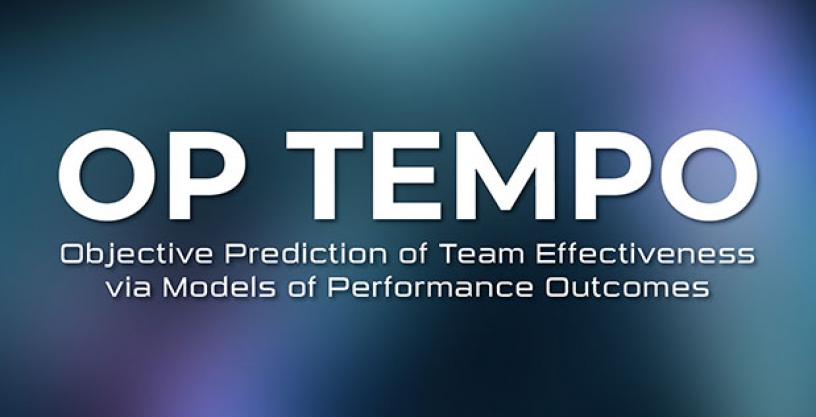DARPA’s OP TEMPO aims to develop objective, bio-behavioral signatures of DOD team performance during training
Nov 2, 2023
Statistics and other analytical methods have become the standard for optimizing sports teams in training and in games. Could a similar approach improve team outcomes across the Department of Defense? Current state-of-the-art DOD team training relies on broad team building exercises, classroom academics, extensive repetitions with stand-in or simulated teammates, and limited-throughput live, virtual, and constructive (simulated) exercises. These training methods may utilize subjective evaluation methods such as instructor observations and checklists to assess team performance, and potentially imprecise, qualitative, post-hoc instructor feedback1. No objective, quantitative measures of team performance or training effectiveness have been established or validated, and no objective tools exist to improve the training itself or to predict performance in DOD teams.
Enter DARPA’s Objective Prediction of Team Effectiveness via Models of Performance Outcomes (OP TEMPO) program, which aims to provide DOD instructors with data-driven capabilities to support real-time assessment, after-action review, performance diagnostics, and objective prediction of teaming proficiency and mission readiness. The effort will identify and characterize bio-behavioral signatures, such as heart rate variability and communication dynamics, that correlate to team performance outcomes, and leverage unobtrusive sensor suites to accurately and reliably measure these signatures during real-world training. Fundamental questions of signature validity and generalizability across diverse team training settings will also be explored.
“Without methods to objectively assess team training performance, we are unable to measure current training efficacy, diagnose performance breakdowns, or determine whether future training adaptations are effective,” said Dr. Joeanna Arthur, OP TEMPO program manager. “OP TEMPO seeks to overcome these challenges by using biological signatures to predict and optimize team performance.”
If the 2.5-year program is successful, these capabilities will translate to training for myriad DOD use cases requiring highly coordinated team performance, such as tactical squads, squadron-level air crews, cyber defense teams, and medical teams, among others. The effort will lay the groundwork for future teaming exercises to optimize coordination and overall performance.
"DOD teams are not simply the sum of their collective parts, but have highly specialized and dynamic roles, and performance relies on collaboration, communication, and coordination,” added Arthur. “With OP TEMPO, we aim to solve the problem of ‘how do we turn a team of experts into an expert team?"
OP TEMPO performers will engage with U.S. government and defense stakeholders, as well as appropriate regulatory authorities, to ensure safety and efficacy. Teams will be required to collaborate with ethical, legal, and societal implications experts and ensure the research addresses any related concerns.
A Broad Agency Announcement solicitation with all program details and instructions for submitting proposals is available on SAM.gov: https://sam.gov/opp/9ef05081e84a4e7da31783eebbf60085/view.
[1] United States Department of the Army. (2015). Army Team Building (ATP 6-22.6).

